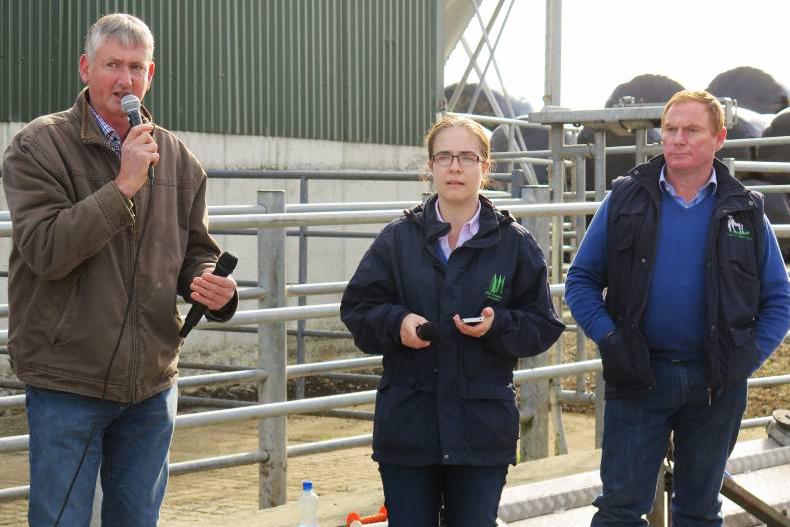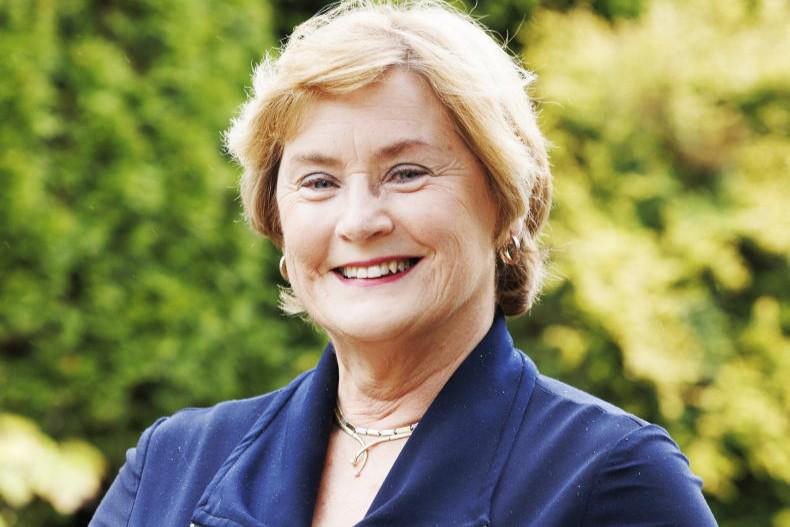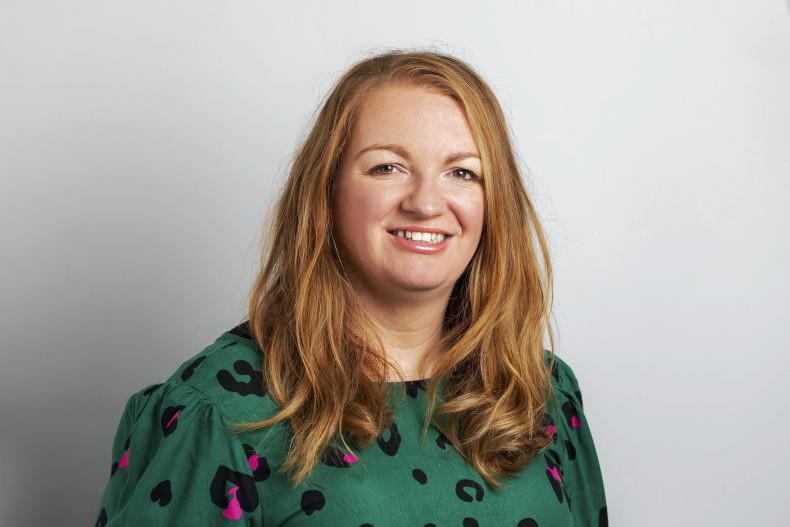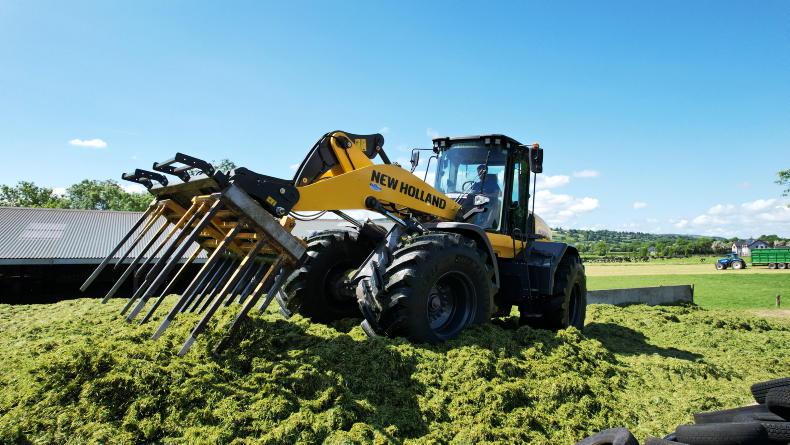Farming near Templederry in Co Tipperary, Aidan and his wife Anne milk 93 cows on a 38ha milking platform.
The first Lely robot was installed before the 2012 calving season, with the second robot added shortly afterwards. With quota limiting production up to this year, cow numbers remained more or less static, dropping slightly in 2013 and 2014. However, Aidan’s long-term plan is to milk 120 cows on the farm. This would be 60 cows per robot, up from 46 at present.
Production is good – cows produced 527kg milk solids last year from 938kg of meal. Aidan says the cows are on track to deliver over 580kg of milk solids this year from 1t of meal per cow. Current performance is 1.83kg of milk solids per cow per day from, on average, 2kg of meal per cow per day.
Herd EBI is average, at €125. This year, 65% of the herd calved in six weeks, while overall empty rate after this year’s breeding season was 6.5% after 14 weeks.
The Power System
The herd is all spring-calving, with the first of the cows calving in mid-January. Training takes a couple of days per animal. Aidan says the biggest job is to get the heifers to stand still when in the milking box, but that once an animal is trained, she is trained for life so the only animals to be trained now are the heifers that enter the herd.
Aidan says: “The secret with training is to be really calm and patient. If a heifer is very upset going in to the robot for the first time, I will sometimes leave her back into the calving pen with her calf and after a few hours bring both of them out to the robot. I leave the calf next to the robot and then the heifer is more relaxed.”
Last year, cows went to grass on 20 February and were housed fully on 20 November. Aidan operates an AB system, which means the farm is split into two blocks, with the cows alternating between sections twice a day. The changeover times he uses are 3am and 2pm.
He says: “The whole secret is the grass allocation. Get that wrong and the system collapses. You need to allocate enough to each grazing, but not too much or the cows will never come in or too little and they’ll all be in together.”

Aidan’s whole system has changed since the robots went in. Before 2012, he would have been feeding maize or wholecrop or grass silage at this stage, trying to extend grass and keep yields up. Now, the only feeds are grass and concentrate as routinely feeding other feeds just complicates the system and cows go out of sync.
Silage can be fed if required. Last year during a drought period he fed round bale silage out in the paddock, and managed to keep the grazing regime the same. He can feed silage in the shed and keep the cows back, but he prefers not to do this if at all possible.
Cows are currently going to the robot 1.9 times a day. Average farm cover is 1,000kg/ha. Aidan doesn’t want covers to go much higher as the cows don’t clean these out as much, especially as they are on a voluntary system, coming and going as they please.
Costs
In terms of costs, Aidan’s 2014 Profit Monitor showed total costs of 26.96 c/litre. This was actually lower than his total costs before the change to robots. In 2011, his total costs were 31.6 c/l. According to Aidan, the main reason for the lower cost structure is there are less “other feeds” going in and better use of grass. Last year, 14t of grass was grown per hectare.
Another part of the reason for the lower costs per litre now are that the fixed costs are being diluted with more milk – 90,000 litres more is being produced now than in 2011, almost 1,000 litres more per cow.
To get the true figure of costs, we need to see the total cash costs, including capital and interest payments before and after the robot was installed.
However, like many farmers, Aidan’s decision to go down the robot route wasn’t straightforward. He says he needed to upgrade his milking facilities anyway so the decision he had to make was whether or not he thought robots would work in a grass-based system and whether the extra investment over conventional milking systems was worthwhile. However, he says that the price difference between the robots and the high-tech parlour alternative was small.
He puts the increase in yield down to increased milking frequency at peak (average 2.5 visits per cow) and better feeding of high yielding cows – feed to yield and improved grass quality.
Comment
The farm walk, while informative and interesting, was lacking expert input. Visitors got a really good overview of Aidan’s system and how the system is working for him, but I felt some outside expertise was required at certain boards, especially on the issue of costs. With plenty of Teagasc expertise at the event, perhaps the Irish Grassland Association should have asked someone to spend more time at this.
Read more
There was more discussion on robotic milking at the event, with a presentation by Teagasc researchers on their own trial at Moorepark.
Farming near Templederry in Co Tipperary, Aidan and his wife Anne milk 93 cows on a 38ha milking platform.
The first Lely robot was installed before the 2012 calving season, with the second robot added shortly afterwards. With quota limiting production up to this year, cow numbers remained more or less static, dropping slightly in 2013 and 2014. However, Aidan’s long-term plan is to milk 120 cows on the farm. This would be 60 cows per robot, up from 46 at present.
Production is good – cows produced 527kg milk solids last year from 938kg of meal. Aidan says the cows are on track to deliver over 580kg of milk solids this year from 1t of meal per cow. Current performance is 1.83kg of milk solids per cow per day from, on average, 2kg of meal per cow per day.
Herd EBI is average, at €125. This year, 65% of the herd calved in six weeks, while overall empty rate after this year’s breeding season was 6.5% after 14 weeks.
The Power System
The herd is all spring-calving, with the first of the cows calving in mid-January. Training takes a couple of days per animal. Aidan says the biggest job is to get the heifers to stand still when in the milking box, but that once an animal is trained, she is trained for life so the only animals to be trained now are the heifers that enter the herd.
Aidan says: “The secret with training is to be really calm and patient. If a heifer is very upset going in to the robot for the first time, I will sometimes leave her back into the calving pen with her calf and after a few hours bring both of them out to the robot. I leave the calf next to the robot and then the heifer is more relaxed.”
Last year, cows went to grass on 20 February and were housed fully on 20 November. Aidan operates an AB system, which means the farm is split into two blocks, with the cows alternating between sections twice a day. The changeover times he uses are 3am and 2pm.
He says: “The whole secret is the grass allocation. Get that wrong and the system collapses. You need to allocate enough to each grazing, but not too much or the cows will never come in or too little and they’ll all be in together.”

Aidan’s whole system has changed since the robots went in. Before 2012, he would have been feeding maize or wholecrop or grass silage at this stage, trying to extend grass and keep yields up. Now, the only feeds are grass and concentrate as routinely feeding other feeds just complicates the system and cows go out of sync.
Silage can be fed if required. Last year during a drought period he fed round bale silage out in the paddock, and managed to keep the grazing regime the same. He can feed silage in the shed and keep the cows back, but he prefers not to do this if at all possible.
Cows are currently going to the robot 1.9 times a day. Average farm cover is 1,000kg/ha. Aidan doesn’t want covers to go much higher as the cows don’t clean these out as much, especially as they are on a voluntary system, coming and going as they please.
Costs
In terms of costs, Aidan’s 2014 Profit Monitor showed total costs of 26.96 c/litre. This was actually lower than his total costs before the change to robots. In 2011, his total costs were 31.6 c/l. According to Aidan, the main reason for the lower cost structure is there are less “other feeds” going in and better use of grass. Last year, 14t of grass was grown per hectare.
Another part of the reason for the lower costs per litre now are that the fixed costs are being diluted with more milk – 90,000 litres more is being produced now than in 2011, almost 1,000 litres more per cow.
To get the true figure of costs, we need to see the total cash costs, including capital and interest payments before and after the robot was installed.
However, like many farmers, Aidan’s decision to go down the robot route wasn’t straightforward. He says he needed to upgrade his milking facilities anyway so the decision he had to make was whether or not he thought robots would work in a grass-based system and whether the extra investment over conventional milking systems was worthwhile. However, he says that the price difference between the robots and the high-tech parlour alternative was small.
He puts the increase in yield down to increased milking frequency at peak (average 2.5 visits per cow) and better feeding of high yielding cows – feed to yield and improved grass quality.
Comment
The farm walk, while informative and interesting, was lacking expert input. Visitors got a really good overview of Aidan’s system and how the system is working for him, but I felt some outside expertise was required at certain boards, especially on the issue of costs. With plenty of Teagasc expertise at the event, perhaps the Irish Grassland Association should have asked someone to spend more time at this.
Read more
There was more discussion on robotic milking at the event, with a presentation by Teagasc researchers on their own trial at Moorepark.












SHARING OPTIONS